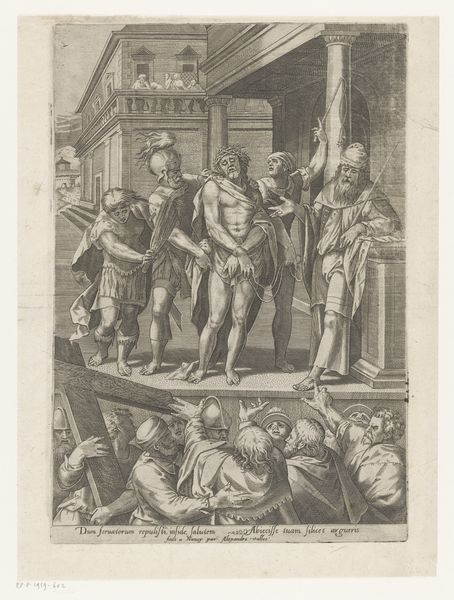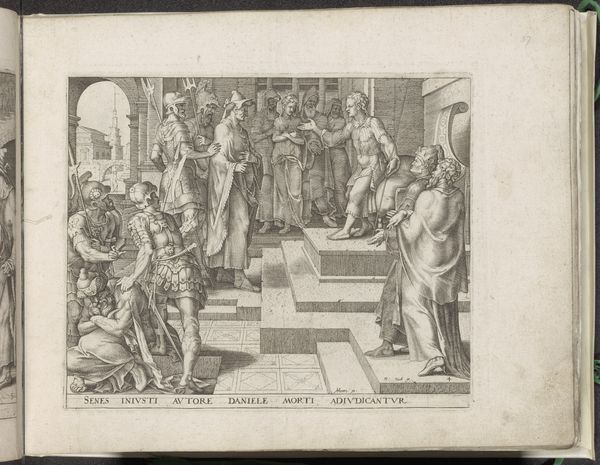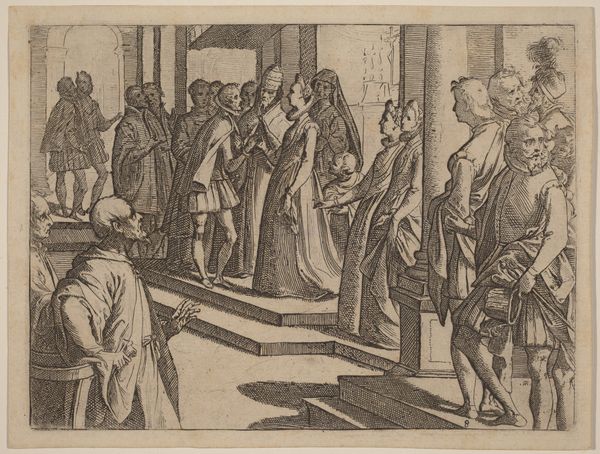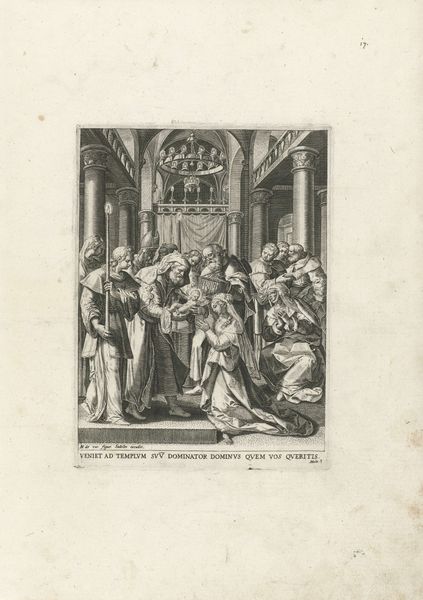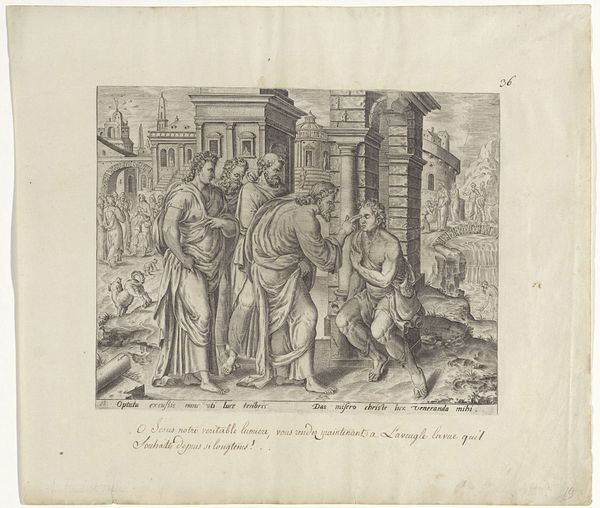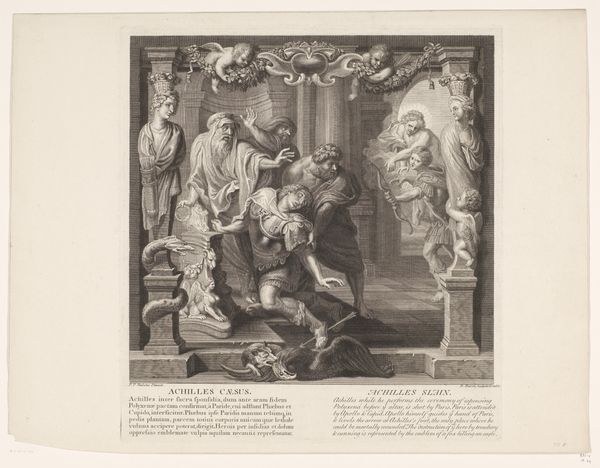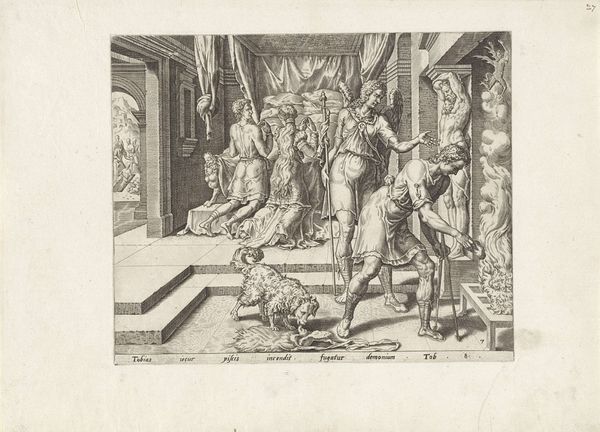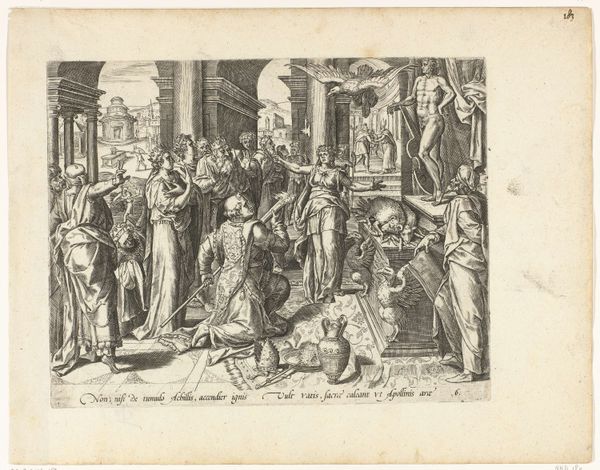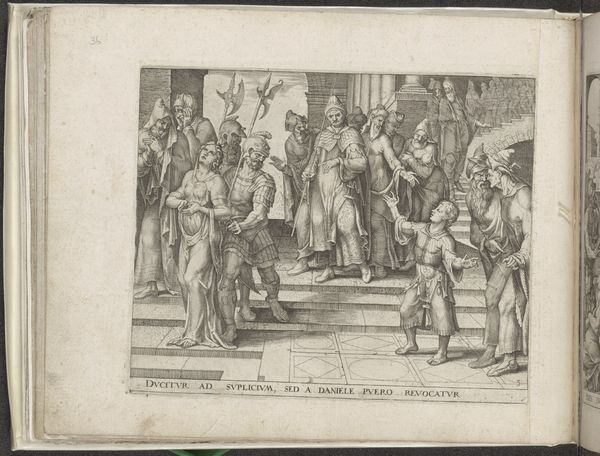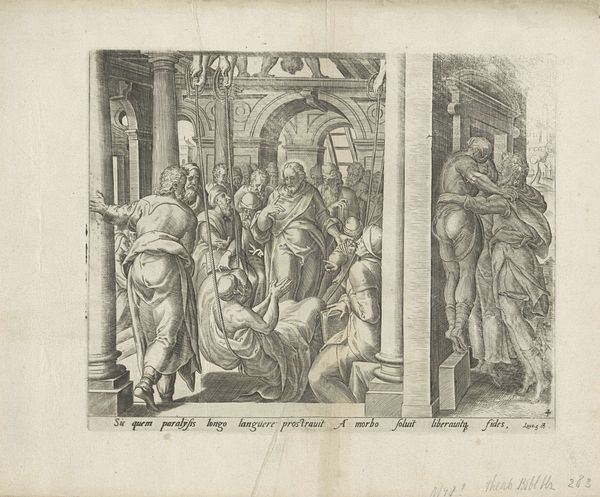
Motetprent en titelblad met Salomo als componist van het Hooglied 1590
0:00
0:00
johannsadeleri
Rijksmuseum
print, engraving
#
allegory
#
baroque
# print
#
old engraving style
#
figuration
#
line
#
history-painting
#
engraving
Dimensions: height 217 mm, width 262 mm
Copyright: Rijks Museum: Open Domain
Curator: Welcome. We are standing before "Motetprent en titelblad met Salomo als componist van het Hooglied," or Motet Print and Title Page with Solomon as Composer of the Song of Songs. This engraving, created around 1590 by Johann Sadeler I, is currently housed here at the Rijksmuseum. Editor: The image presents as rather austere. The line work is exacting, almost to the point of feeling rigid. The monochromatic palette lends an antique sensibility. I notice that Solomon's musical score is so meticulously rendered. It commands attention. Curator: Indeed. Note how Sadeler masterfully uses line and shadow to create depth and texture. The architectural setting is rendered in a High Baroque style, yet there is that element of allegory characteristic to engravings of the time. Observe, too, the lions, symbols of royalty. Solomon is figured as powerful and enlightened. Editor: Considering the broader socio-historical context, this depiction also subtly reinforces power dynamics. Solomon, presented here as the composer of divine songs, embodies the archetype of divinely sanctioned leadership. He occupies an elevated position, not only on the throne but culturally. The male figures arranged on the stairs listen with rapt attention, reifying a hierarchical power structure between leader and laity. The print is not just an artistic depiction, but it functions as a symbol of an ideology in the Baroque court and Church system. Curator: The architectural framing creates a defined spatial experience. There is a very intentional interplay between horizontal and vertical planes, echoing the stability that kings are meant to possess, as it relates to line and formal arrangement. Note also the perspective: Solomon seems to dominate the score of music, highlighting his influence and inspiration. Editor: It’s also intriguing to note the absence of women within this image celebrating the Song of Songs, which explores love and eroticism. Their absence here underlines women's frequent exclusion from creative power. How did women perform these songs? Did women have opportunities to create music at this time? This opens more complex and provocative dialogue concerning gender and agency. Curator: Viewing through that lens expands the narrative. While the structure adheres to conventions of linear perspective and classical elements, appreciating what's *not* visually presented adds significant depth to our analysis. Editor: By understanding the intersectional elements and histories involved, these works give form to our cultural narrative, offering crucial perspectives on historical ideologies that endure even today. Curator: A fascinating point indeed, prompting a richer comprehension of how formal elements operate alongside cultural implications.
Comments
No comments
Be the first to comment and join the conversation on the ultimate creative platform.
